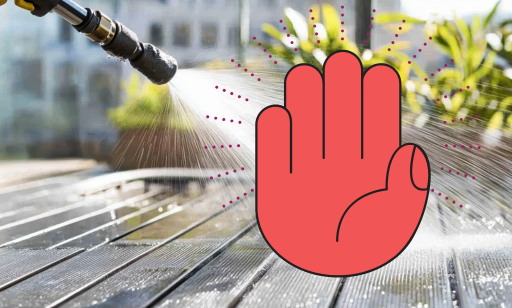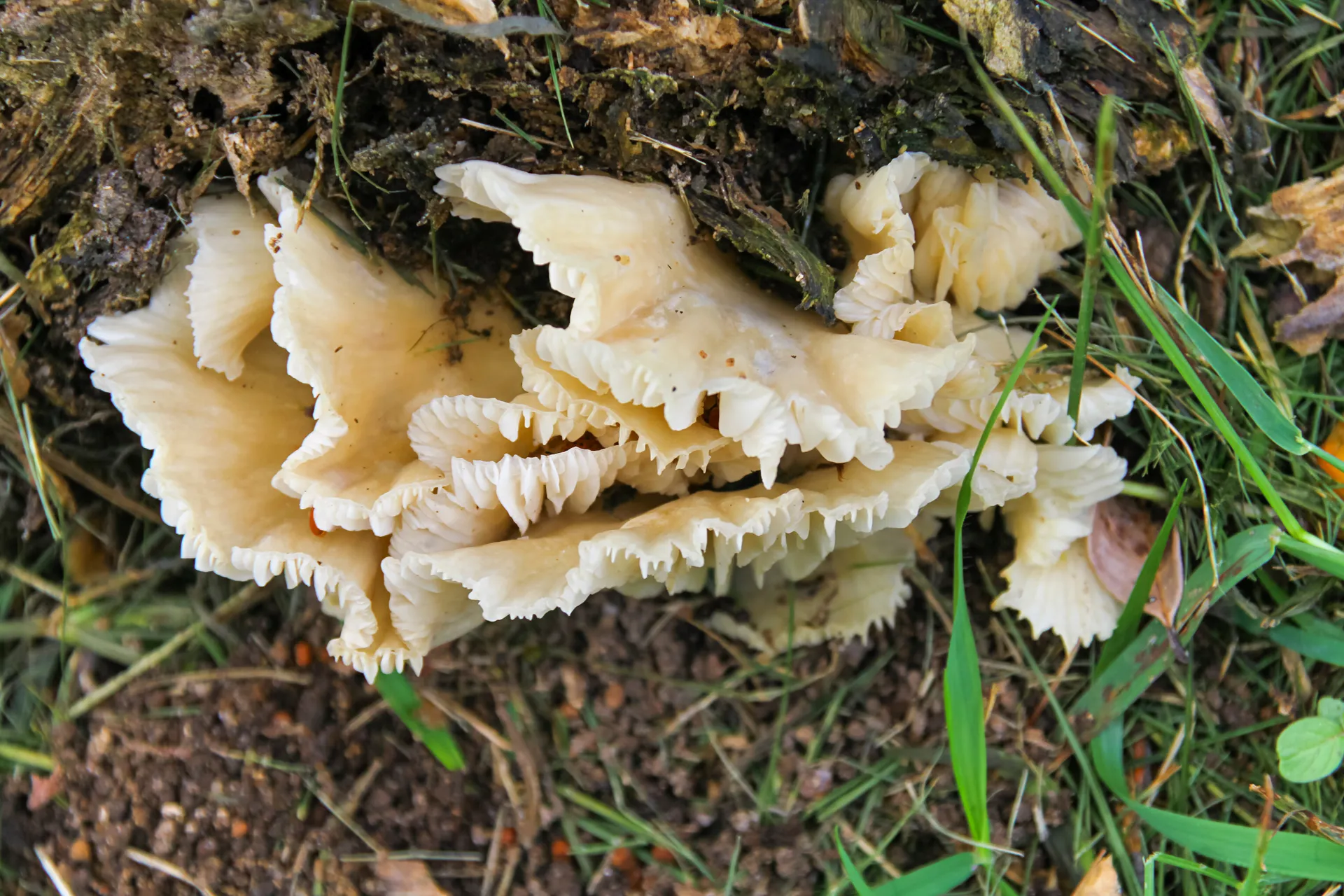Deck rescue just in time for summer

The mercury is rising and al fresco dining is on the cards. If you’ve got a couple of rotten treads in your deck, it's time to grab your toolbelt and ready the saw.

There are times when you need to call the experts, but with a little know how, many jobs can be completed at home. Depending on the level of damage, your timber deck could be one.
These steps help prolong the life of your deck, reducing the need for new materials and cutting down on waste.
Steps to Repair Rotten Treads on a Timber Deck

Assess the Damage
Check if the rot has affected only the surface or if it goes deeper. Poke the wood with a screwdriver—if it sinks easily, the wood is soft and needs replacement.
Inspect surrounding treads and framing for further signs of rot to ensure the structural integrity of the deck.
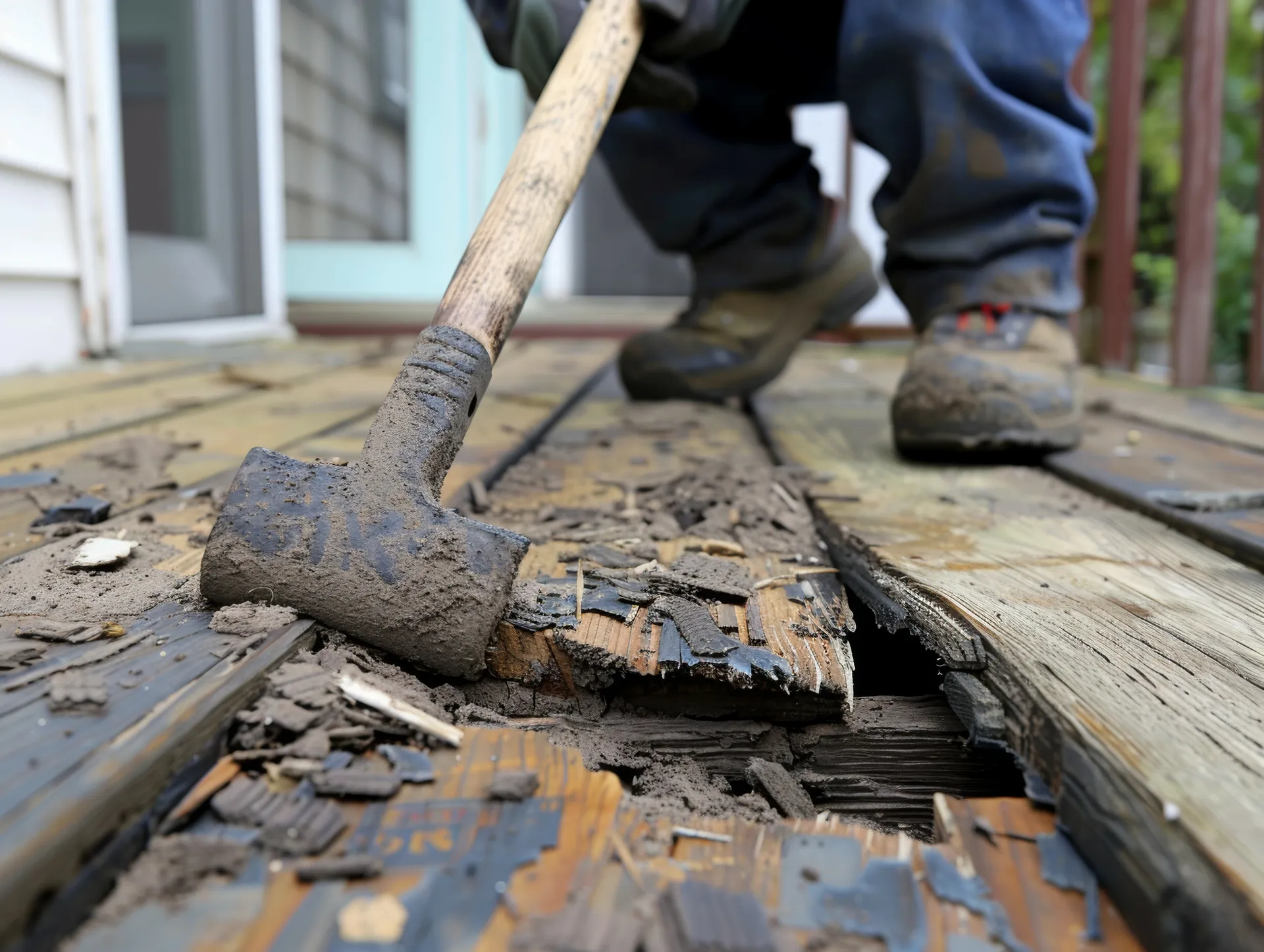
Gather Necessary Tools and Materials
Materials:
- Epoxy wood filler (for minor surface repairs)
- Wood hardener (if needed to stabilize partially damaged wood)
- Timber preservative (to prevent future rot)
- Sandpaper (coarse and fine grits, for smoothing)
- Weather-resistant screws or nails (to secure replacement wood)
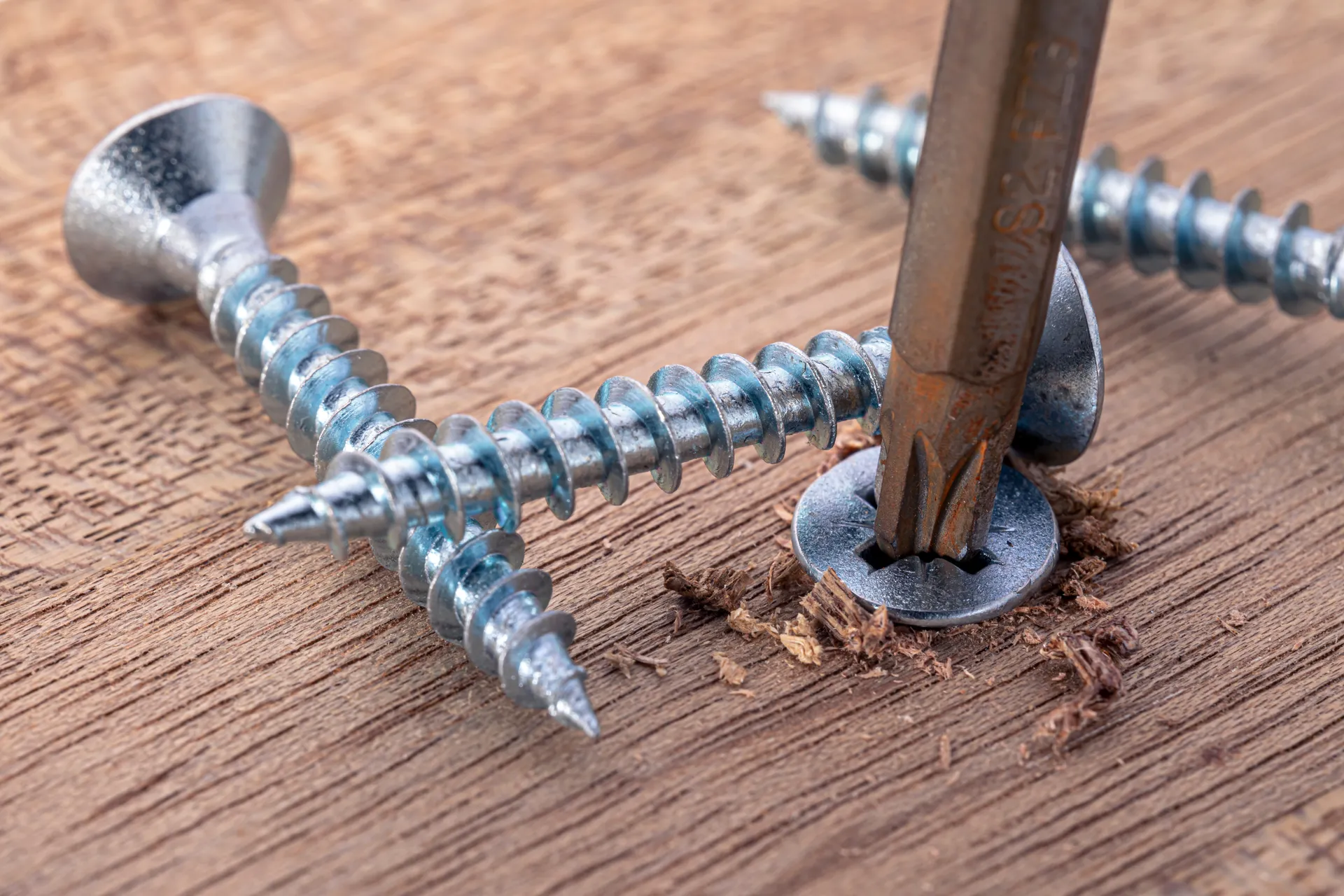
Tools:
- Cordless drill or screwdriver
- Hammer or pry bar (to remove old treads)
- Saw (for cutting replacement pieces to fit)
- Chisel or utility knife (to remove rotten wood or cut around damaged sections)
- Paintbrush (for applying preservative and hardener)
- Sanding block or electric sander
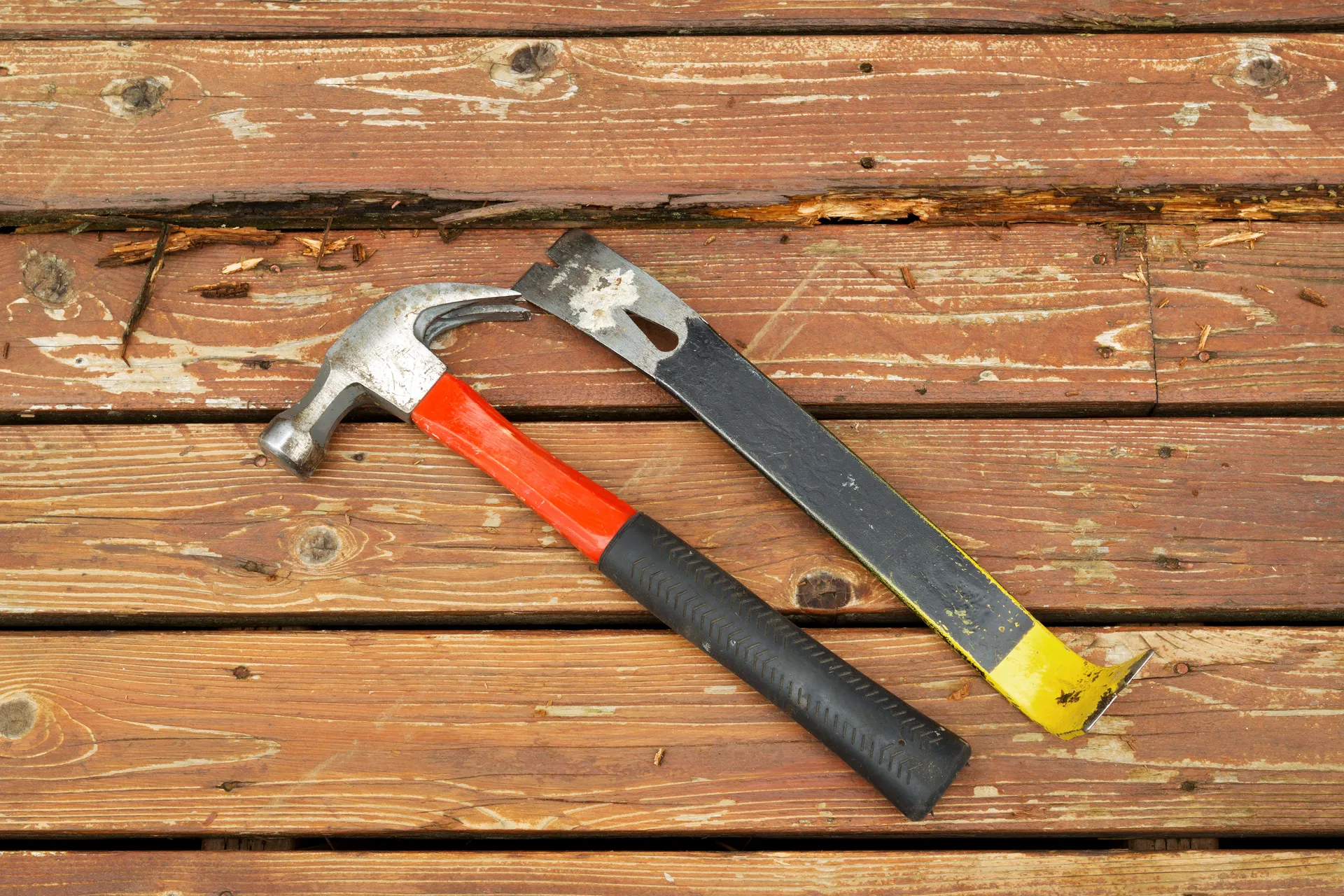
Remove the Damaged Tread
Unscrew or pry up the rotten tread carefully to avoid damaging surrounding areas.
If only a section is rotten, consider cutting out just the damaged part for a patch repair.

Repair the Tread (if Minor Damage)
For surface-level rot, use a wood hardener to reinforce the weakened wood. Apply with a brush, following the manufacturer’s instructions.
Once hardened, apply epoxy wood filler to fill any cracks or gaps. Shape it to match the existing wood grain, then let it dry thoroughly.
Sand the repaired area to ensure it’s level and smooth.
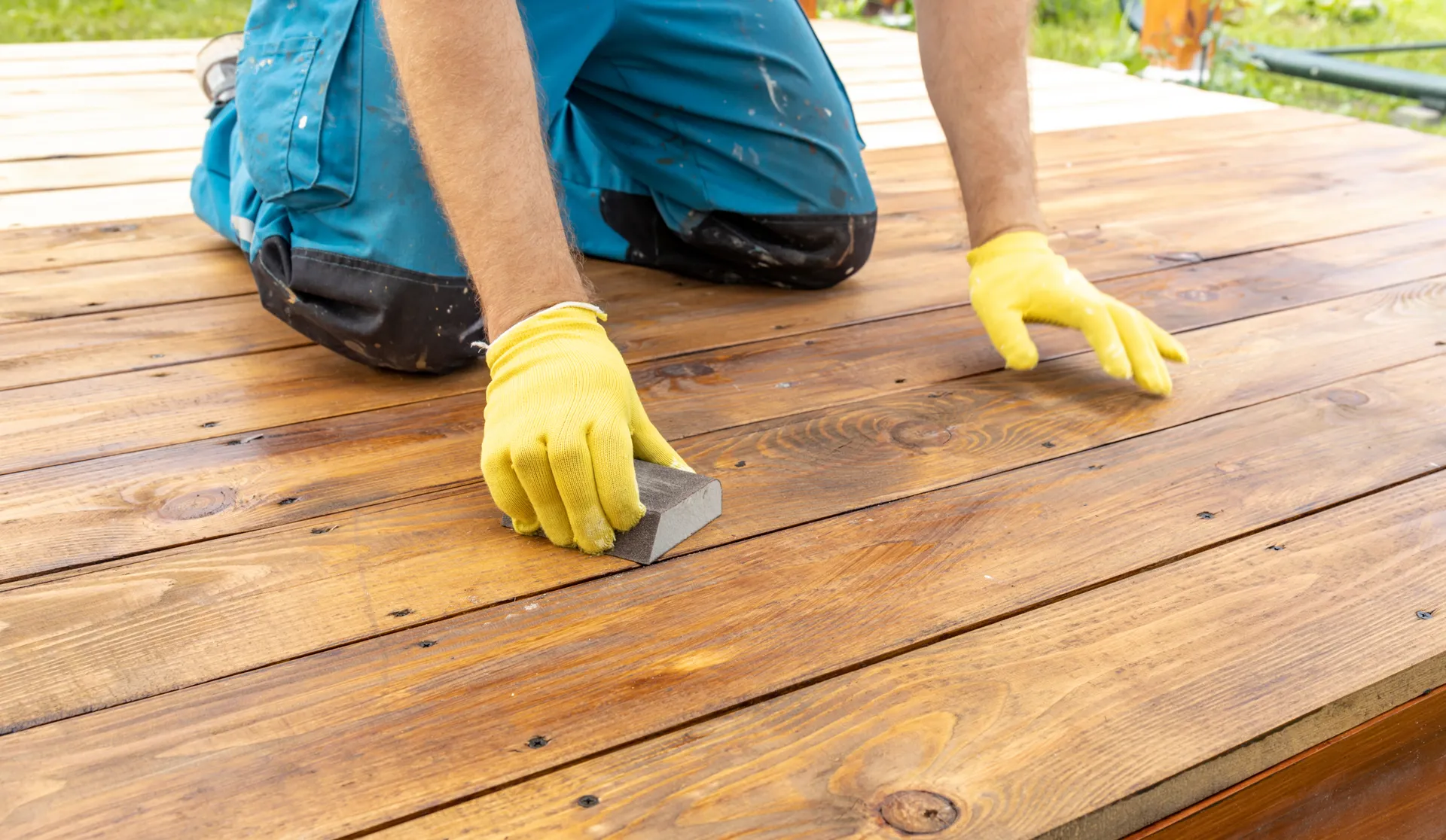
Replace the Tread (if Major Damage)
If the rot has penetrated deeply, replace the tread with similar timber, ideally reclaimed or upcycled wood to keep costs low and reduce environmental impact.
Cut the replacement tread to size, making sure it fits securely and aligns with other treads.
Treat the new piece with timber preservative before installation to protect it from future rot.
Install the Tread
Secure the new or repaired tread with weather-resistant screws or nails. Ensure it’s level and stable.
Re-sand if necessary, especially around edges, to ensure smooth transitions.
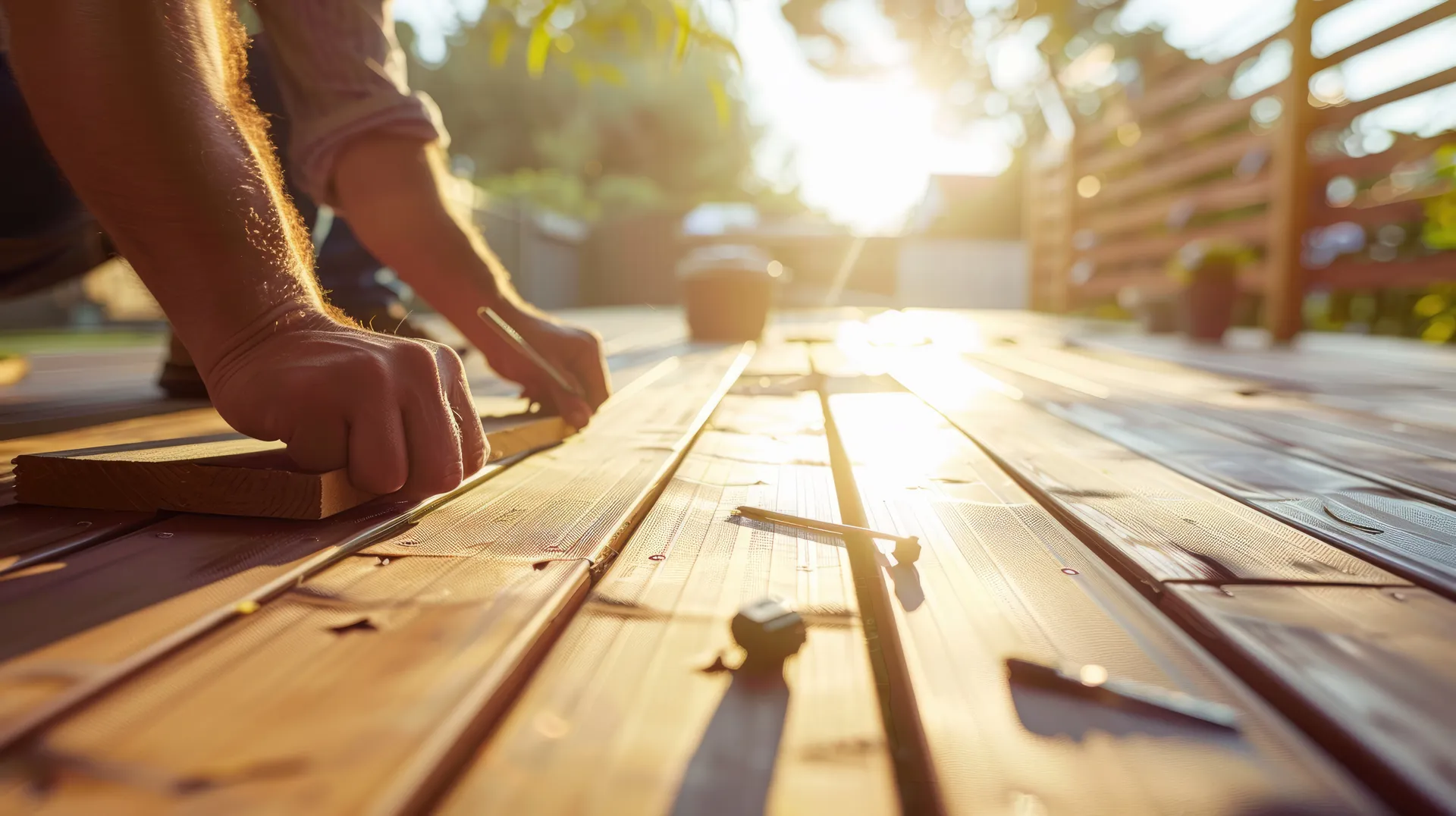
Seal and Protect
Apply a high-quality exterior timber sealant or oil across the deck to prevent future moisture damage. This will help extend the life of all treads and protect against humidity typical in a subtropical climate.

Additional Tips
Salvaging Timber: If you need to replace wood, consider checking local timber yards for reclaimed pieces. Council operates recycling markets at Caloundra, Beerwah, Buderim, Witta and a small market at Mapleton. Visit the waste and recycling pages on Council's website for opening times and items for sale.

Regular Maintenance: Inspect your deck regularly for early signs of rot, particularly after wet seasons, to prevent further issues.
Avoid Pressure Washing: Pressure washing can damage timber, making it more susceptible to rot; instead, use a gentle cleaning solution and soft brush.
